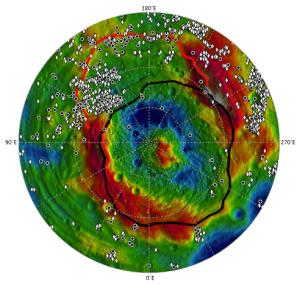Messenger has found new and “compelling” evidence that there is water ice locked in the permanently shadowed craters of Mercury.
On Monday I had spoken to one of the project scientists for this discovery, David Lawrence, in connection with an article I am doing for Astronomy on the evidence of water on the Moon. I knew the Mercury announcement was coming, and asked him for some details. Based on what he told me, it struck me that the evidence for water on Mercury is actually more conclusive than the evidence for the Moon. (In fact, inconclusive nature of the lunar data is the point of my Astronomy article, based on previous posts here and here on Behind The Black.
The more intriguing aspect of this discovery on Mercury, however, is the unknown dark material that covers and protects some of this water ice. That some scientists believe it might even be organic material deposited there by comets and asteroids is most interesting.

